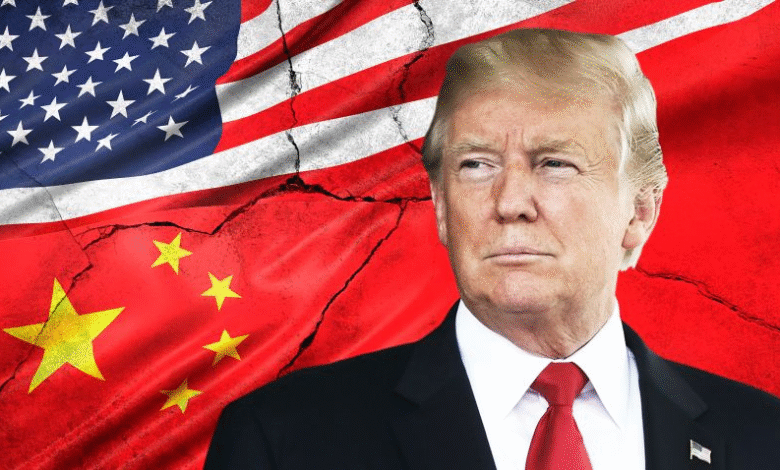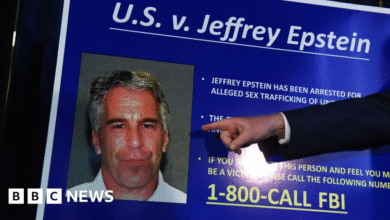Trump’s China India Russia Policy: A Strategic Overview

Trump’s China India Russia policy represents a unique and complex mix of aims and strategies, altering the geopolitical landscape in significant ways. Under his administration, the U.S. has employed a trade strategy focused on leveraging relations with India and Russia while softening its stance on China, particularly in regards to tariffs. This approach has not only raised geopolitical tensions but has also resulted in deep scrutiny of U.S. India relations, particularly as New Delhi continues to import discounted Russian oil amidst looming secondary tariffs. Critics argue that Trump’s policies inadvertently favor China, as they remain free from similar trade penalties affecting India, raising questions about the fairness and consistency of U.S. trade practices. As the global economy continues to evolve, the intricacies of Trump’s dealings with these major powers highlight the ongoing challenges faced by the U.S. in maintaining a balanced foreign policy.
The multifaceted strategy of the Trump administration regarding China, India, and Russia illustrates a broader context of international relations and economic negotiations. This approach has drawn attention due to its paradoxical elements, such as the balancing act between maintaining U.S. interests while directly impacting bilateral engagements with key allies like India. As the administration scrutinizes Indian oil imports from Russia, alternative methods of pressure and tariffs are utilized, showcasing an inclination toward using trade policy as a tool for geopolitical leverage. Meanwhile, the relatively lenient stance towards China raises eyebrows, inviting a deeper analysis of the U.S.-China relationship against the backdrop of global energy dynamics and diplomatic dealings. Each of these elements intertwines, creating an intricate web of international policy that reflects the current realities of global trade.
Understanding Trump’s Trade Strategy with India and Russia
Trump’s trade strategy has prompted discussions about the geopolitical implications of his administration’s policies towards countries like India and Russia. With India being a key player in the global market, Trump’s approach seems paradoxical as he aims to exert pressure through secondary tariffs, especially pertaining to Russian oil imports. By leveraging trade negotiations, he attempts to garner support from India, all while criticizing its reliance on oil from Russia amidst ongoing geopolitical tensions.
Moreover, the tension over oil imports not only affects U.S.-India relations but also highlights the broader consequences of Trump’s trade strategy. The looming 25% tariffs seek to compel India to shift its purchasing patterns and align more closely with U.S. foreign policy objectives. In this high-stakes game of leverage, Trump appears to view trade negotiations as a pathway to secure concessions that serve his administration’s interests.
The Complex Dynamics of U.S.-India Relations under Trump
The relationship between the U.S. and India under Trump’s administration has been fraught with complexities. Despite efforts to solidify ties, the imposition of tariffs, especially on Indian goods related to Russian oil, has pushed India into a defensive position. Indian officials argue that the U.S. is unfairly targeting them despite their contributions to stabilizing oil markets during turbulent times. This scenario reveals the underlying tensions that could unravel years of diplomatic progress.
Furthermore, the delicate balancing act of the Trump administration in addressing economic interests while aligning with geopolitical postures exhibits a lack of consistency. The irony lies in India’s past eagerness to engage with the U.S., which has now metamorphosed into a fraying partnership under the strain of aggressive tariff strategies and critical rhetoric. The future of U.S.-India relations hinges on navigating these challenges and finding common ground amidst the ongoing trade disputes.
Trump’s Policy and Its Impact on Russian Oil Economics
Trump’s strategy towards Russia, particularly regarding oil imports, seems to lack a coherent long-term strategy. The punitive measures targeting Indian imports of Russian oil hint at an attempt to isolate Russia economically while failing to confront China’s significant stake in the oil game. This inconsistency raises questions about the effectiveness of Trump’s broader geopolitical strategy—are secondary tariffs achieving their intended purpose of mitigating Moscow’s oil revenue?
The substantial increase of Russian oil sales to India has not only fortified Moscow’s trading position but also diminished the impact of international sanctions. As Washington grapples with the complexities of global energy markets, Trump’s administration faces stark criticisms for its double standards; while India’s purchases are penalized, China’s surge in oil imports is treated with more leniency. This disparity reflects a nuanced, albeit fractured, strategy towards achieving geopolitical goals.
Geopolitical Tensions: Analyzing Trump’s Tariff Tactics
The geopolitical landscape under Trump’s administration has witnessed renewed tensions, significantly shaped by the imposition of tariffs. As his agenda unfolds, it becomes clear that these financial penalties are not mere trade instruments but political tools aimed at realigning global alliances. By targeting India with secondary tariffs for its Russian oil imports, Trump is not just reshaping economic paradigms but also redirecting the political dynamics between these countries.
The rhetoric surrounding the tariff strategies underscores the growing concern about the implications on international relations, leading to strained ties not only between the U.S. and India but also affecting broader U.S.-Russia relations. With Trump’s trade war extending beyond tariffs into strategic diplomatic measures, it’s essential to consider how these policies will impact future negotiations and global partnerships.
Trump’s China Policy: A Calculated Avoidance
In stark contrast to his aggressive stance on India, Trump’s approach towards China appears to be one of calculated leniency. While India faces steep tariffs due to its oil purchases from Russia, China—historically the largest importer of Russian oil—has been spared this aggressive action. This dichotomy raises questions regarding Trump’s long-term strategy and whether his administration’s objectives truly align with the underlying principles of foreign policy.
By choosing to avoid confronting China directly regarding its escalated oil imports from Russia, Trump may seek to preserve critical trade dialogues and a potential summit with Chinese President Xi Jinping. As the global oil trade becomes increasingly politicized, the administration’s selective application of tariffs indicates a broader strategy focused on maintaining vital bilateral relations rather than consistency in policy enforcement.
The Role of Tariffs in Trump’s Leverage Strategy
Tariffs have become a cornerstone of Trump’s strategy, serving as both a tool for economic pressure and a means of extracting concessions from trade partners. In the case of India, the imposition of tariffs for Russian oil imports exemplifies Trump’s broader approach to leverage in negotiations. By employing this tactic, Trump seeks to compel countries to adopt positions more amenable to U.S. interests, thereby using economic penalties as powerful negotiating tools.
The overarching goal for Trump seems to be extracting beneficial concessions that can serve domestic agendas while reshaping international relations. However, as the tariff pressures mount, they risk not only harming bilateral relations but also complicating the geopolitical landscape as nations recalibrate their alliances in response to U.S. policies. This makes the role of tariffs in global trade discussions increasingly complex and consequential.
Assessing the Future of U.S.-China Negotiations under Trump
Looking ahead, the future of U.S.-China negotiations under the Trump administration remains uncertain. The inconsistent tariff strategies towards both nations have left many analysts perplexed as to how the administration plans to reconcile its different approaches. While Trump’s focus on leveraging trade agreements with India has escalated tensions, his reluctance to impose similar tariffs on China highlights an ambiguous stance that could impede effective negotiations.
Amidst this volatility, the importance of establishing a coherent framework for U.S.-China dialogue cannot be overstated. As both nations maneuver through competitive trade practices, the ongoing discussions present not only challenges but also opportunities for redefined economic cooperation. The outcome of these negotiations will significantly influence both nations’ global standing and economic stability.
Conclusion: Navigating Trump’s Unconventional Foreign Policy
In conclusion, Trump’s unconventional foreign policy reflects a complex blend of economic strategy and geopolitical maneuvering. The interplay between tariffs imposed on India while sparing China encapsulates the unpredictability of Trump’s approach to international relations. The ongoing tariff battles illustrate how trade policy is intricately linked to larger geopolitical considerations, making it a critical area for continued analysis.
As nations like India and Russia recalibrate their trade relationships in light of U.S. policies, the global landscape remains fluid. The consequences of Trump’s tariffs and overall trade strategy will echo far beyond immediate diplomatic relations, potentially redefining alliances and economic dependencies as countries respond to the pressures of U.S. foreign policy in an increasingly multipolar world.
Frequently Asked Questions
What are the main objectives of Trump’s China India Russia policy?
Trump’s China India Russia policy primarily aims to extract leverage from these nations to secure trade deals and maintain geopolitical stability. By pressuring India with tariffs on Russian oil imports while courting China and Russia, the administration seeks to gain concessions that could benefit U.S. interests.
How does Trump’s trade strategy affect U.S. India relations?
Trump’s trade strategy has complicated U.S. India relations by instituting secondary tariffs on Indian imports of Russian oil. This has frustrated New Delhi, which feels unfairly targeted despite its attempts to comply with U.S. expectations, thus straining bilateral ties that had been improving.
Why are tariffs being imposed on India for purchasing Russian oil according to Trump’s policies?
According to Trump’s policies, tariffs are being imposed on India as a response to its increasing dependence on Russian oil imports. U.S. officials argue that India’s purchasing actions are profiting Russia, prompting Washington to enforce secondary tariffs as a disciplinary measure.
What role does China play in Trump’s China India Russia policy?
China plays a unique role in Trump’s China India Russia policy as it has been exempted from secondary tariffs on Russian oil imports. This leniency may reflect Trump’s desire to maintain a cooperative relationship with China while negotiating trade agreements and avoiding geopolitical conflicts.
What impact do tariffs on India have on geopolitical tensions involving Russia?
Tariffs on India for its Russian oil purchases may exacerbate geopolitical tensions by pushing India closer to Russia, which could undermine U.S. efforts to isolate Moscow economically. The situation illustrates Trump’s attempt to leverage trade policy as a means of diplomatic negotiation.
How do geopolitical tensions influence Trump’s policy toward China and Russia?
Geopolitical tensions significantly influence Trump’s policy by creating a landscape where leveraging trade becomes critical. The contradictory approach of courting Russia while imposing pressure on India and sparing China highlights strategic balancing to achieve broader U.S. foreign policy goals.
What are the implications of Trump’s tariffs on Indian goods for U.S.-India trade relations?
The implications of Trump’s tariffs on Indian goods are serious for U.S.-India trade relations; they could hinder progress on comprehensive deals and create lasting animosity. As India responds to the tariffs, the resulting trade dynamics could reshape bilateral engagements and future negotiations.
How does Trump’s attitude towards China differ from his policies towards India and Russia?
Trump’s attitude towards China differs significantly as he exhibits restraint in imposing punitive measures compared to his aggressive stance on India and critical engagement with Russia. This reflects a tactical decision to maintain a potentially beneficial relationship with China while applying pressure on India.
What are the key components of Trump’s trade strategy in relation to Russia’s oil imports?
The key components of Trump’s trade strategy concerning Russia’s oil imports include leveraging tariffs as a tool to exert pressure on allies like India while fostering a relationship with Russian leadership for potential diplomatic gains. This dual strategy reflects a focus on maximizing U.S. influence globally.
How do experts view the effectiveness of Trump’s policies towards China, India, and Russia?
Experts view the effectiveness of Trump’s policies towards China, India, and Russia as mixed, often pointing to the ad-hoc nature of his approach. While some perceive it as a shrewd method to leverage international trade dynamics, others criticize it for lacking a clear, coherent strategy that could ensure long-term stability.
| Key Point | Details |
|---|---|
| Leveraging Trade Relationships | Trump aims to extract leverage from trading partners like India and Russia, prioritizing a trade deal with India and a ceasefire with Russia. |
| Tariffs on India | India faces potential secondary tariffs of 25% on Russian oil, affecting its trade negotiations with the U.S. amid accusations of profiting from cheap Russian oil. |
| China’s Position | China has not faced tariffs for its Russian oil imports, as it was already a major buyer before the Ukraine conflict, highlighting a geopolitical leniency from Trump. |
| U.S.-Russia Relations | Trump’s friendly overtures to Putin contrast sharply with the administration’s pressure on India, indicating a complicated geopolitical strategy. |
| Criticism of U.S. Policy | Critics argue that India’s dependence on Russian oil and the U.S.’s ambiguous stance could harm relations, suggesting U.S. tariffs are simply a tool for leverage. |
| Goals of Trump’s Policy | The underlying aim appears to be to use tariffs as a means to exert influence rather than strictly follow foreign policy principles. |
Summary
Trump’s China India Russia policy revolves around a complex interaction of trade leverage and geopolitical maneuvering. By utilizing tariffs and direct negotiations, Trump seeks to recalibrate existing alliances and leverage trade dynamics to his advantage. This multifaceted approach highlights the duality of maintaining pressure on India while simultaneously avoiding confrontation with China, aiming for a balanced yet strategic influence in the region.




